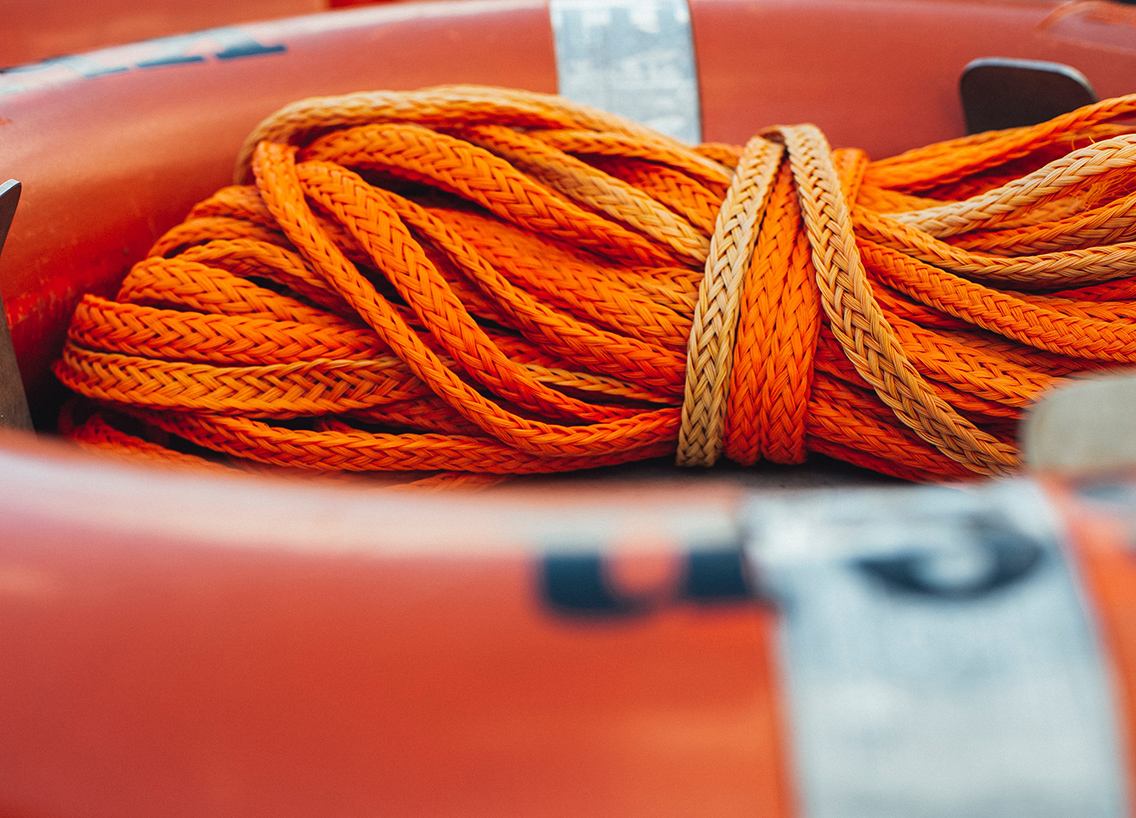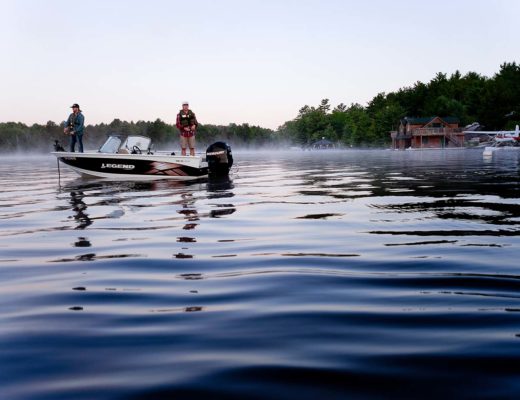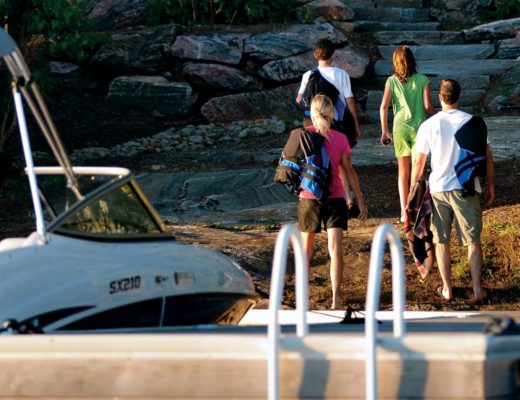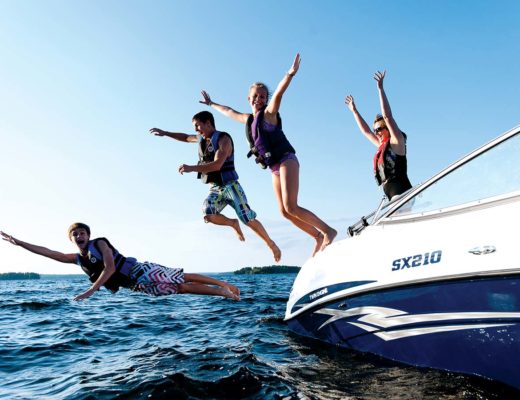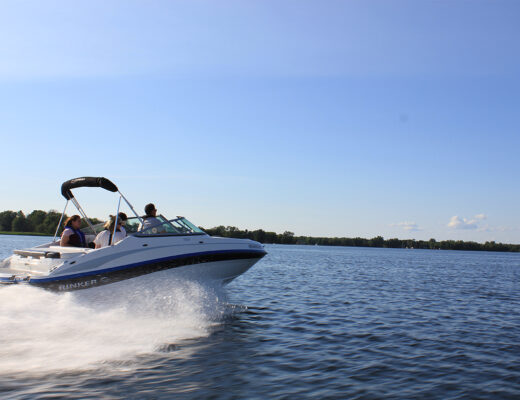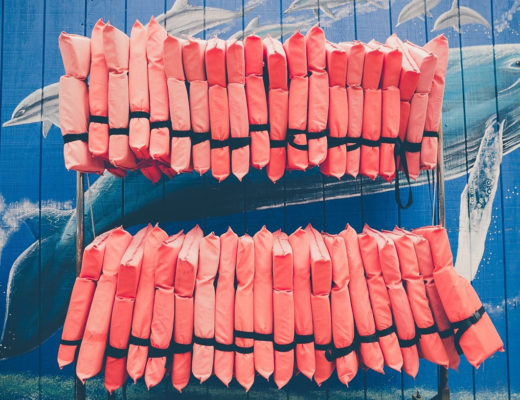Planning ahead and having the right boat safety equipment on board before boating can make for a safer and more enjoyable boat trip. All boats are required by law to carry specific boat equipment at all times, and the required equipment depends on the size and type of boat.
There are several types of important safety equipment that all boaters should be familiar with and know how to use: Boat Safety Equipment, Personal Safety Equipment, Navigation Equipment, and Distress Equipment. Keep reading to learn about the types of equipment in each group and how to stock your boat with the everything you need for a safe day on the water!
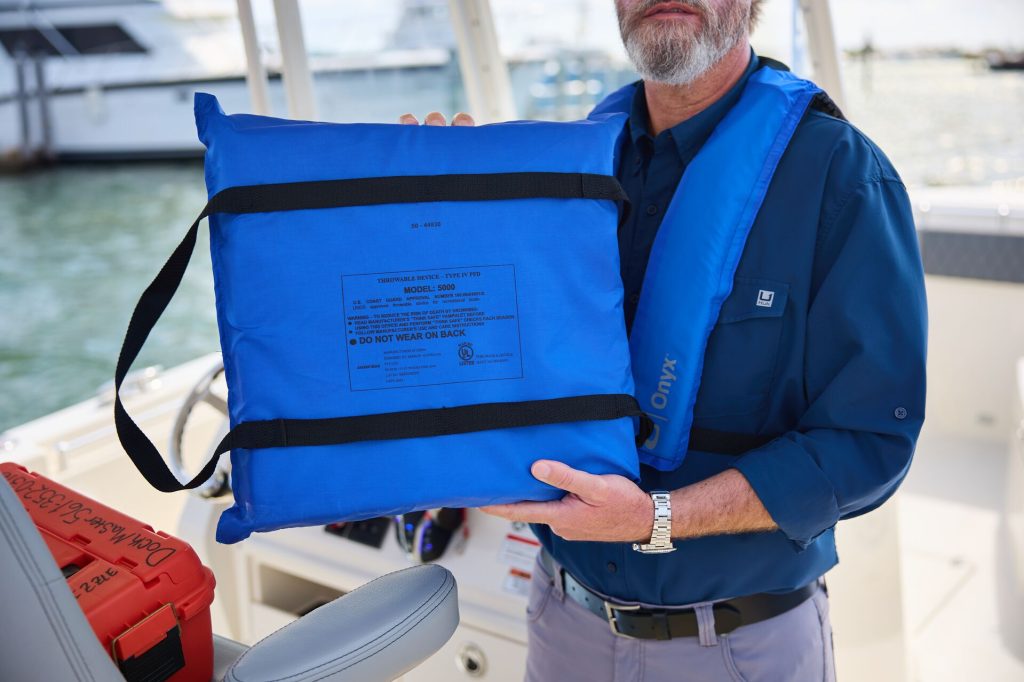
Boat Safety Equipment to Consider
What should you have on board to help keep yourself and others safe if something goes wrong? Consider this list of safety equipment before launching this season.
- Bailing Device: A bailing device removes water from the inside of a boat. It could be a manual or electric bilge pump, a bucket, or a homemade scoop.
- Anchor: An anchor can secure your boat in case of a breakdown or anchorage due to poor weather. Anchors are available in various types and styles; boaters should refer to their boat manufacturer’s recommendations for style and weight.
- Manual Propelling Device: Manual propelling devices, such as oars or paddles, can be used to maneuver your boat in case of engine failure or boating breakdown.
- Axe: An axe can be an effective fire-fighting tool on large boats. It can chop a wall concealing open flames and cut a tow line in an emergency.
- Life Ring (or Throwable Flotation Device): A life ring, also known as a lifebuoy, is a throwable flotation device that can be used to rescue a person who has fallen overboard. A life ring must be attached to a line of at least 15 meters in length.
- Fire Extinguisher: A fire extinguisher is crucial for controlling small fires in emergency situations.
- Re-boarding Device: A reboarding device, such as a ladder, is designed to aid and assist a person back into the boat or back on board if they fall overboard.
Make sure you follow boating regulations and carry the required equipment for the boat’s type and size.

Personal Safe Boating Equipment for Your Boat
In addition to safety equipment for the boat, operators and passengers need safety essentials, too. These include:
- Personal Floatation Devices (PFDs) and Lifejackets: PFDs and lifejackets must be approved by Transport Canada.
- Buoyant Heaving Line: A buoyant heaving line has a buoy or float at one end. It is designed to throw to a person who has fallen overboard or is in the water and needs help.
- Emergency Kit: An emergency kit should be stored in a watertight container and an easily accessible location. It should include emergency rations, drinking water, a first aid kit, waterproof matches, a waterproof flashlight, a knife, a whistle, and dry clothing.
Aside from wearing your lifejacket while on board, we hope you never need these other pieces of equipment when on the water. However, it’s crucial to have them with you . . . just in case.
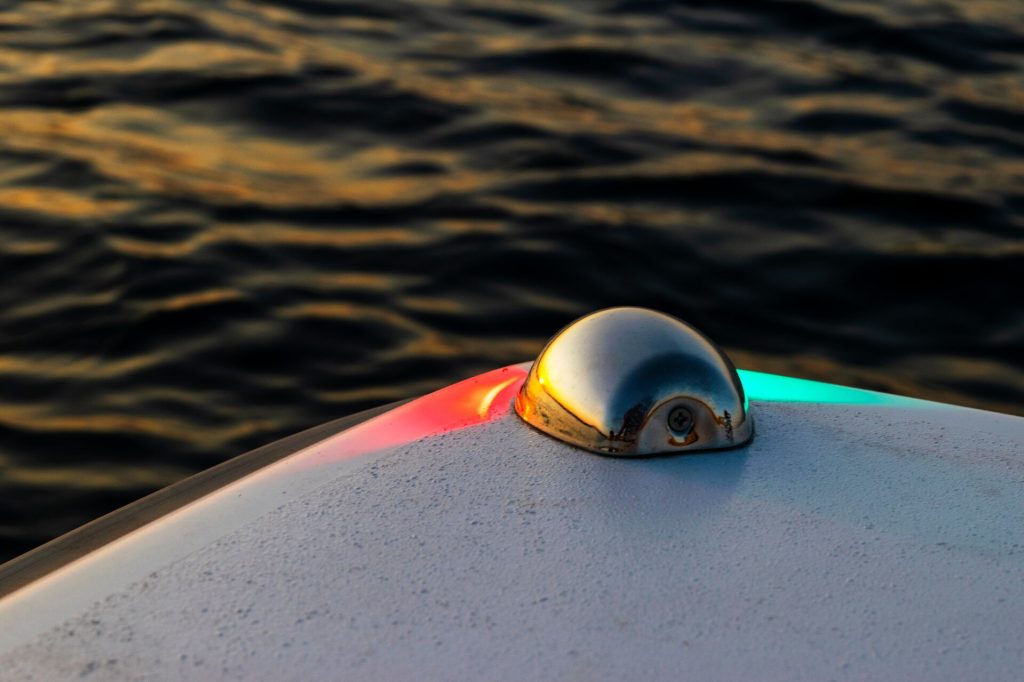
Boat Navigation Equipment
Your boat also needs navigation equipment to help you stay safe on the water and return home safely. Check your boat and make sure it has what it needs to navigate effectively, especially if something goes wrong.
- Sound-Signaling Devices: Sound-signaling devices can be used in navigational situations to alert other boaters to your intentions or to signal your need for help. Types of sound-signaling Devices include a mechanical (floatless) whistle, horn, portable compressed-air horns, and a bell.
- Navigation Lights: Navigation lights enhance the visibility of your boat at night or during periods of reduced visibility, such as fog or rain. They also make your boat visible from all angles. Lights must be displayed one hour prior to sunset and remain on until one hour after sunrise and during periods of restricted or reduced visibility
- Passive Radar Reflector: A passive radar reflector is a metallic device that identifies the position of your boat to other vessels equipped with radar.
- Magnetic Compass: A compass is a navigation aid that indicates direction for the boat operator. The needle in a magnetic compass will point to the magnetic north.
Plan your day on the water and use onboard navigational tools to reach your destination and come back home safely every time.
Boating Distress Equipment
We hope it never happens to you, but sometimes things go wrong while out on the water – despite your best efforts to boat safely. If you find yourself in distress while boating, you’ll need the following equipment to let other boaters and rescue teams know you need help.
Flares
Flares signal distress and the need for help. Depending on the size and type of boat and where you are boating, you may be required to carry certain types of flares.
For example, if you are boating in an ocean or on a body of water where you may be 1.5 km from shore, you are required to carry flares. However, boaters operating on a river or lake, where at no time your boat can be more than one nautical mile from shore, are not required to carry flares.
Flares should be stored in a watertight container in a cool, dry area and easily accessible in an emergency. They are valid for four years; check the manufacturer’s date and read the manufacturer’s instructions before using a flare. To dispose of outdated flares, contact your local law enforcement agency or fire department for proper disposal procedures.
Additionally, flares must be approved by Transport Canada.
Note: it is illegal to test or discharge a flare if it is not being used in an emergency situation.
Types of Approved Flares
There are four types of approved flares in Canada. They are:
- Type A: Parachute flare: easily seen from water, land, and air. It must emit a red light.
- Type B: Multi-star flare: easily seen from water, land, and air. It must emit a red light.
- Type C: Hand-held flare: It is not as easily seen from afar but is effective for marking your position. It must emit a red light.
- Type D: Smoke flare: Highly visible during daylight hours. It must emit orange smoke.
Having working flares can help rescuers find you in an emergency, so make sure your boat has what it needs and that they work before pushing away from the dock.
A Watertight Flashlight
Most vessels are required to carry at least one watertight flashlight on their boat at all times. In an emergency, a flashlight can be used as an illuminating device or to send a distress signal. Make sure your flashlight has working batteries.
Using a flashlight, you can signal your need for help by flashing SOS. Three short flashes signal SOS, then three long flashes, followed by three short flashes.
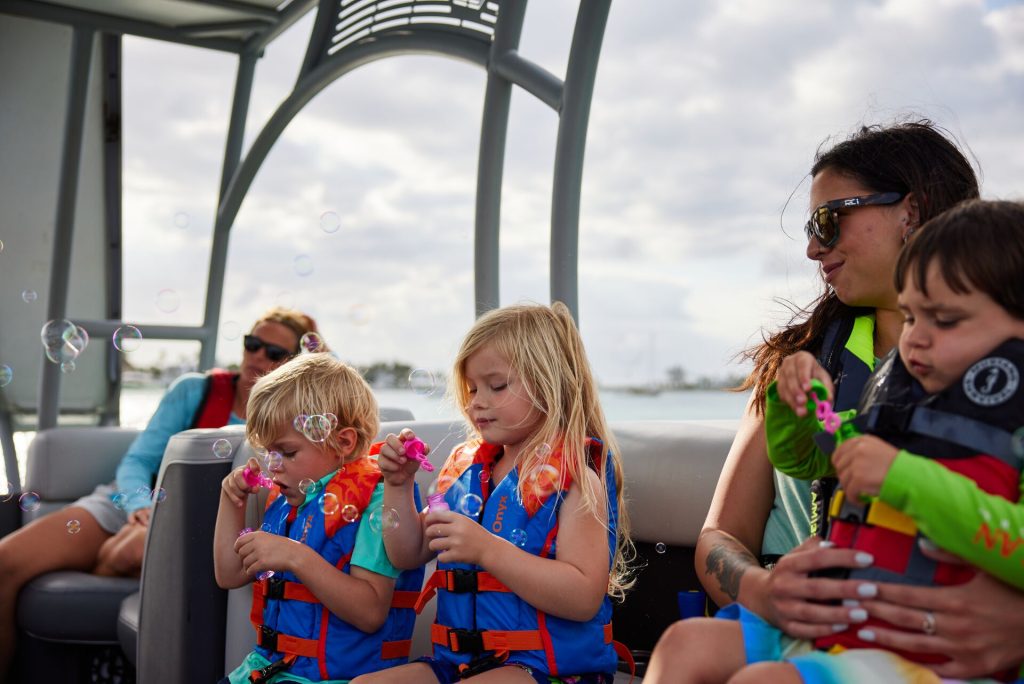
Learn More About Boat Safety Equipement Through BOATsmart!
We hope you never need to use the safety equipment on your boat in an emergency. However, we hope we’ve helped you learn what to keep on board with you every time you leave the dock to ensure you have what you need if something goes wrong.
From signaling devices to lifejackets and a fire extinguisher, never leave the shore without the equipment your boat requires for safe adventures on the water.
Ready to learn more about safe boating? We’ve only scratched the surface here, but we go in-depth with everything you need to know to pass the boater safety exam and get your license in Canada or the U.S. For boaters in Canada, choose the Canada-approved course you need. In the U.S., choose the course for your state.
Originally published April 1, 2020. Content most recently reviewed and updated July 30, 2024.
